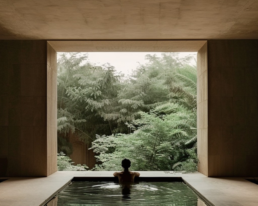How AI Influences Architecture and Design
DATE
09.09.2025
Artificial intelligence (AI) is profoundly transforming the field of architecture and design, opening up new possibilities in the conception, development, and realization of projects.
Thanks to machine learning algorithms and generative tools, professionals can explore thousands of formal and functional solutions in a matter of seconds, optimizing work time and improving the performance of proposals. This massive analytical capacity makes it possible to integrate complex variables such as climate, solar orientation, energy efficiency, or circulation flows automatically during the initial design stages.
One of the areas where AI is having the greatest impact is in the generation of architectural forms and structures through algorithmic processes, via platforms such as Midjourney, DALL·E, or parametric tools integrated into software like Rhino and Grasshopper. These applications do not replace human creativity but expand its reach, allowing designers to test unexpected solutions, experiment with materials, or study spatial behaviors that would be impossible to foresee with traditional methods. In graphic and product design, AI is already being used to prototype, modify textures, develop visual systems, or even customize products based on user preferences.
However, the influence of artificial intelligence is not limited to formal design. It also intervenes in project management, urban data analysis, usage planning, and the prediction of social and energy behaviors. By integrating AI into BIM (Building Information Modeling) tools, it is possible to anticipate failures, calculate costs, control deadlines, and better coordinate the different stakeholders involved in a construction process. In parallel, the use of sensors and smart systems enables the design of buildings that learn from their occupants and adapt their functioning in real time.
This new scenario requires rethinking the role of architects and designers, not merely as project creators but as creative strategists who must learn to interact with machines. Rather than replacing human work, AI emerges as an ally to free up time, automate repetitive tasks, and deepen informed decision-making. The key will lie in using it judiciously, combining intuition and sensitivity with computational power, to build a more efficient, intelligent, and beautiful environment.
MArch Valencia. Arquitectura y Diseño
© 2025 MArch Valencia. Arquitectura y Diseño
Privacy policy | Cookies policy | Terms of use






